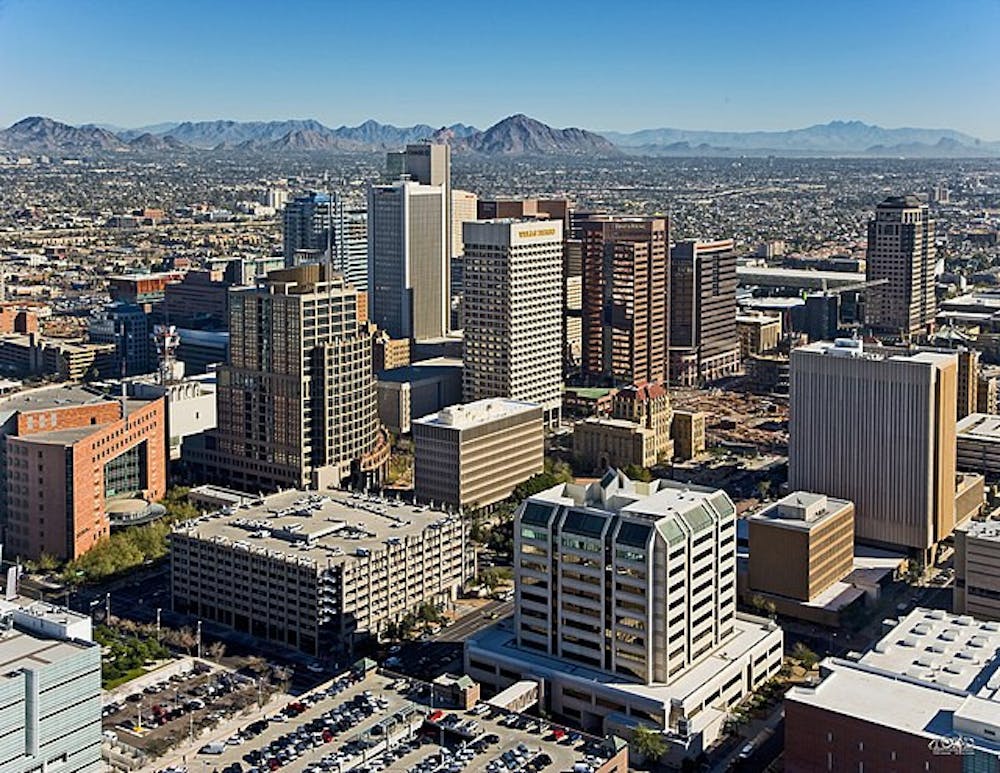The city of Phoenix has become one of the fastest-growing cities in the nation with a 1.9% growth rate, according to the Maricopa Association of Governments. The city’s growth shows no signs of slowing.
In June, the Maricopa Association of Governments (MAG) released their population projections for a number of municipalities within Maricopa County, with Phoenix having one the fastest growth rates. MAG estimated that by the year 2060, Phoenix would host a population of 2.18 million people, roughly a 31% increase from its 1.66 million population reported by the US Census in 2020.
Data Advisory Program Manager for MAG Scott Wilken, indicates data like these are invaluable for governments to accurately build models and infrastructure for transportation services, housing and air quality, which in recent years has become areas of concern for other major cities. Both San Antonio, Texas, and Seattle, Washington, had similar numerical population gains as Phoenix, according to a report by the US Census Bureau, and have similar concerns, according to Seattle government and The Texas Tribune, respectively.
“These data sets need tons of data about people,” Wilken said. “Then you need projections on the future, where people will live and where people will work.”
The calculations and projections are no easy feat and require years of data analytics, which people who research large cities, like Phoenix, have struggled with.
“There is a difficulty in tracking the exact number of residential housing, apartments, and community houses, and the number of people living in them,” said Teleia Galaviz, PIO for the Phoenix Planning and Development Office. “Thousands of permits are requested and approved each year with the possibility of some of those being for the same house or apartment.”
This is where analysts like Wilken can assist. Wilken oversees the population computation and analysis for MAG, creating socioeconomic projections every three to four years so cities can plan accordingly.
“Projections start with county-level population and employment control totals. We get the population numbers from the state, the state demographer, and we get the employment totals from the University of Arizona,” Wilken said. “The model we use needs to find where to put those people to live and where to work.”
“The first thing you have to look for is where there are vacant housing units, for instance, we can look at apartments,” Wilken said. “If it’s got 70% occupancy rate then there’s a certain number of people we know we can put in there.”
Proposed residential units and apartment complexes are also included in the model and predict the number of people who could live in future residences not yet built. Finally, the model will look at jobs, vacant or proposed.
“Starting with vacant, the proposed developments, then retail space, restaurant space or any kind of proposed non-residential space that it can put jobs in,” Wilken said. “That’ll all be for the year 2024. Then we’ll do the same thing over and over again until it gets to 2060.”
Concerns about high pollution levels and low air quality arise during discussions of population growth. Environmental Director for MAG, Tim Franquist, explains that since the Clean Air Act, there has been a formal planning function direct from the “governor’s office in state statute” and is “unique for a municipal planning organization.”
“They have delegated to MAG for three pollutants that are really associated with urban areas,” Franquist said. “Carbon monoxide, which has been a really good success story, particulate matter, and the big one that we’re dealing with which is a serious issue in our area is ozone pollution.”
Carbon monoxide was a “big issue in the 70s and 80s” according to Franquist, but is something that doesn't have the same level of concern as the following two. Particulate matter, which can come in the form of either dust or smoke-sized particles, and ozone. Ozone is affected by secondary pollutants, in the forms of volatile organic compounds, VOCs, and NOx, “oxides of nitrogen in sync.” VOCs include “a whole suite of different chemicals that can come from everything from plants, gasoline or paints,” Franquist said. “Even trees kick off VOCs.”
NOx includes a number of different oxides of nitrogen which “will typically come from combustion of fossil fuels.”
“It's bizarre, but they actually have to react in a very specific ratio, and it has to be done in the presence of sunlight, “Franquist said. “Ultraviolet radiation from the sun, which we get a ton of here in the valley, that chemical process will then generate ozone. When you look to reduce ozone, you look to reduce VOCs and NOx.”
Despite concerns, Franquist remains confident in Phoenix’s ability to handle and reduce air pollution moving forward.
“Phoenix is very forward-leaning,” Franquist said. “They have their own climate action plan and there’s been real consistency the city of Phoenix is taking, they take all environmental issues very seriously.”

